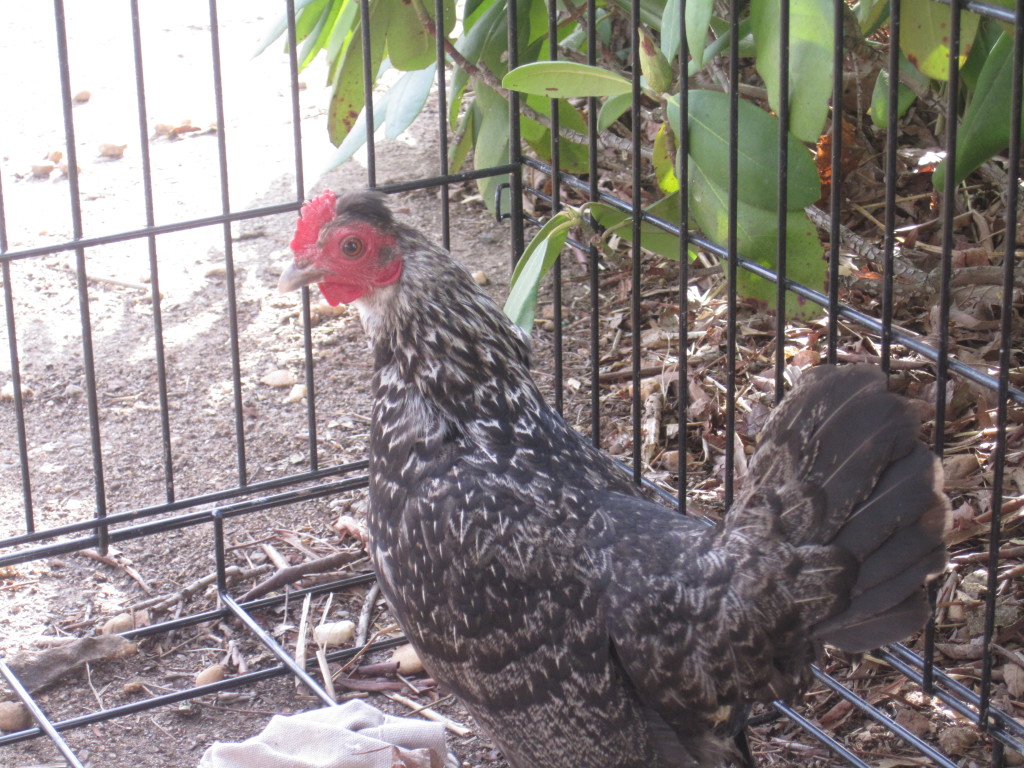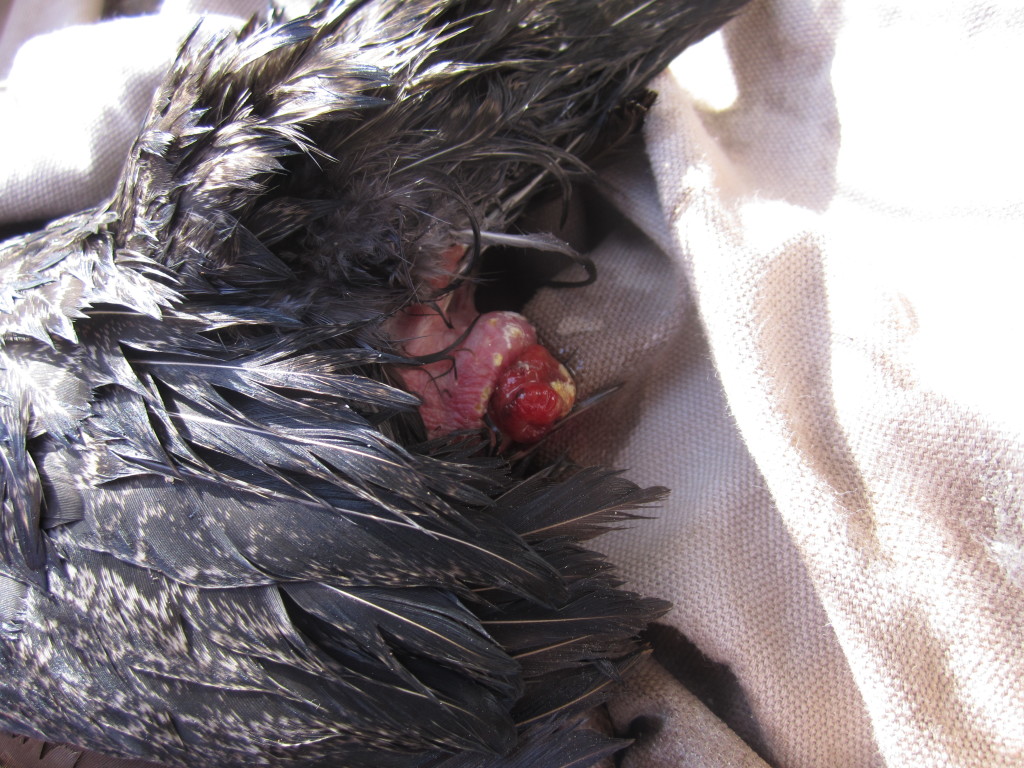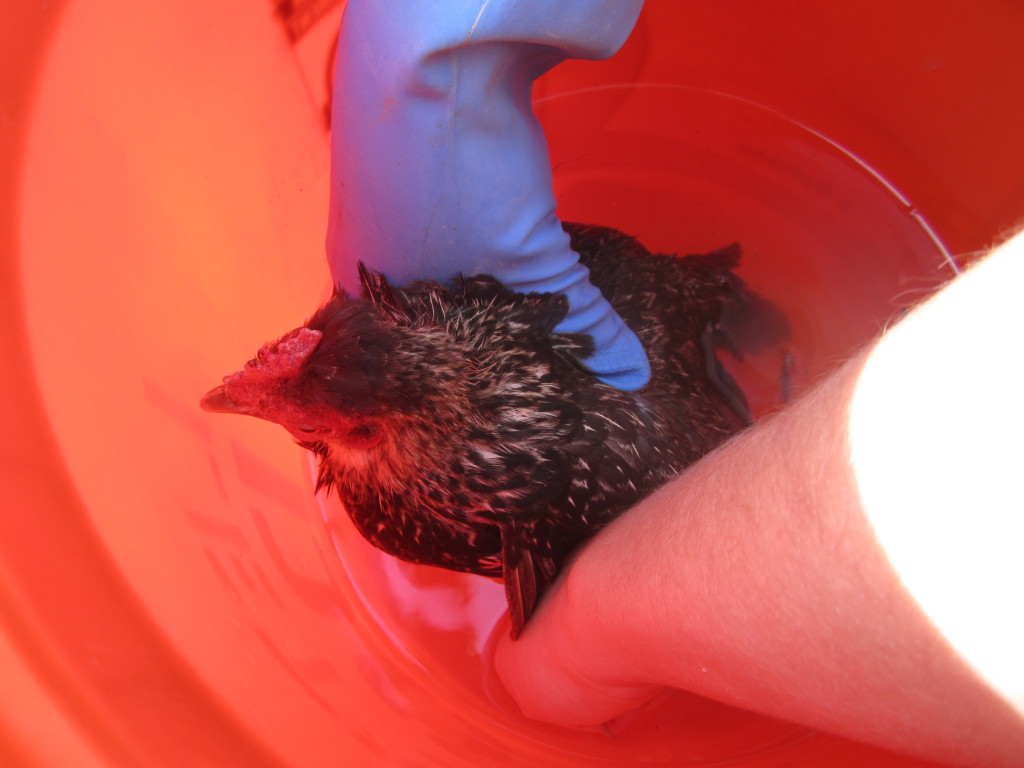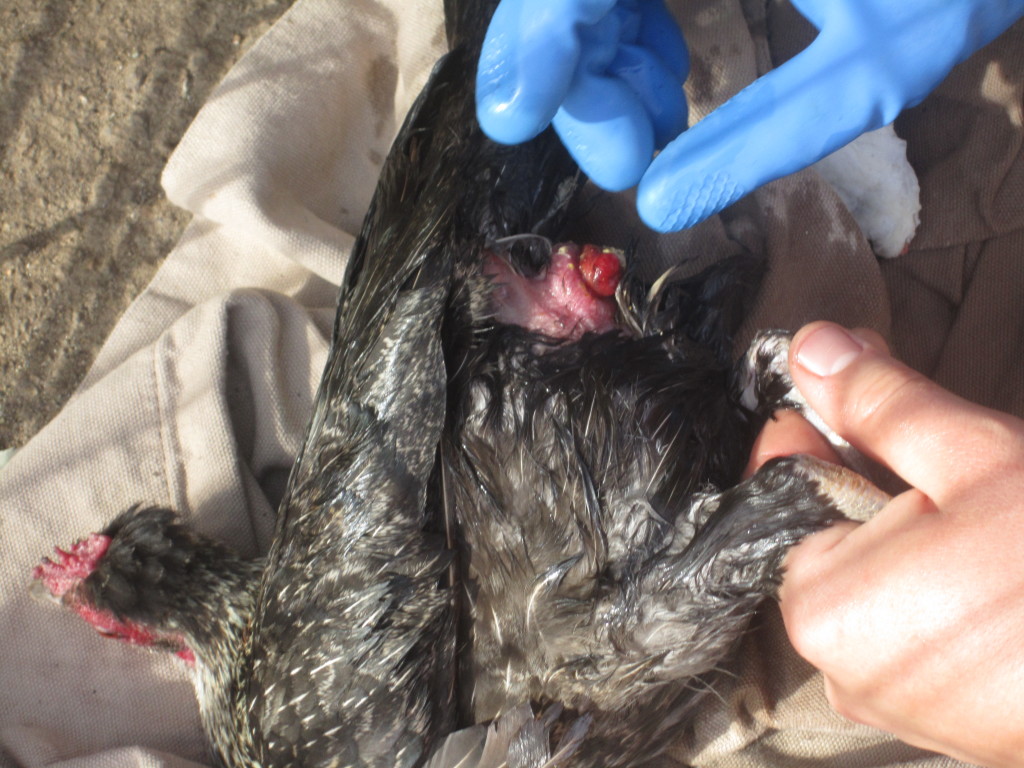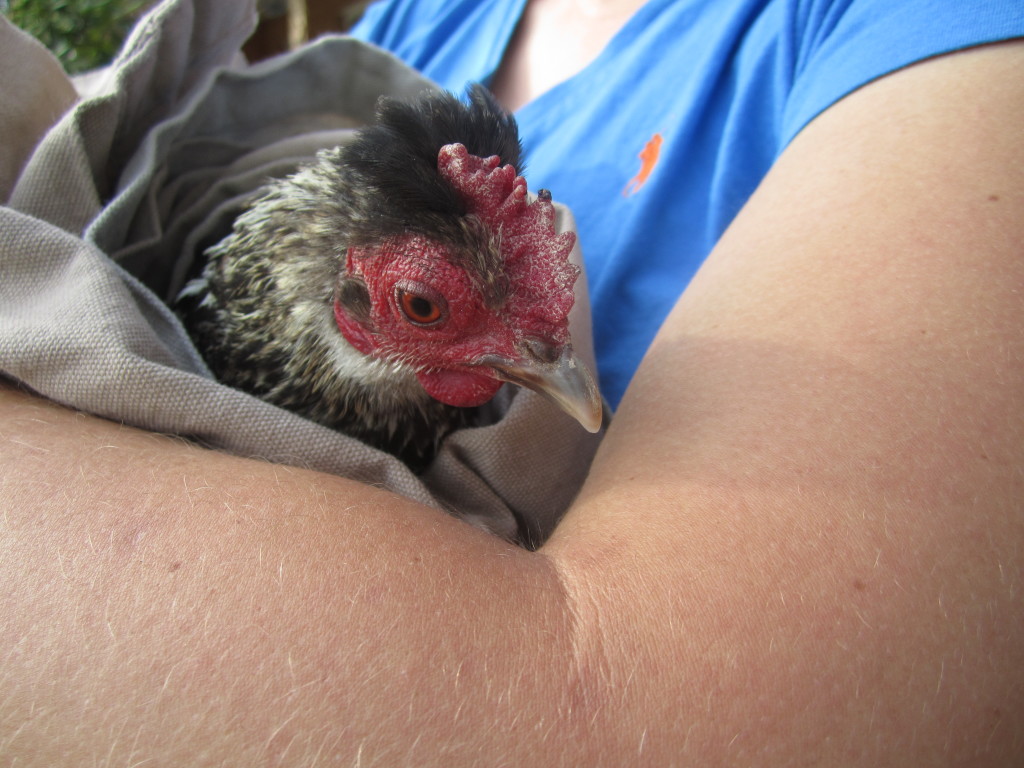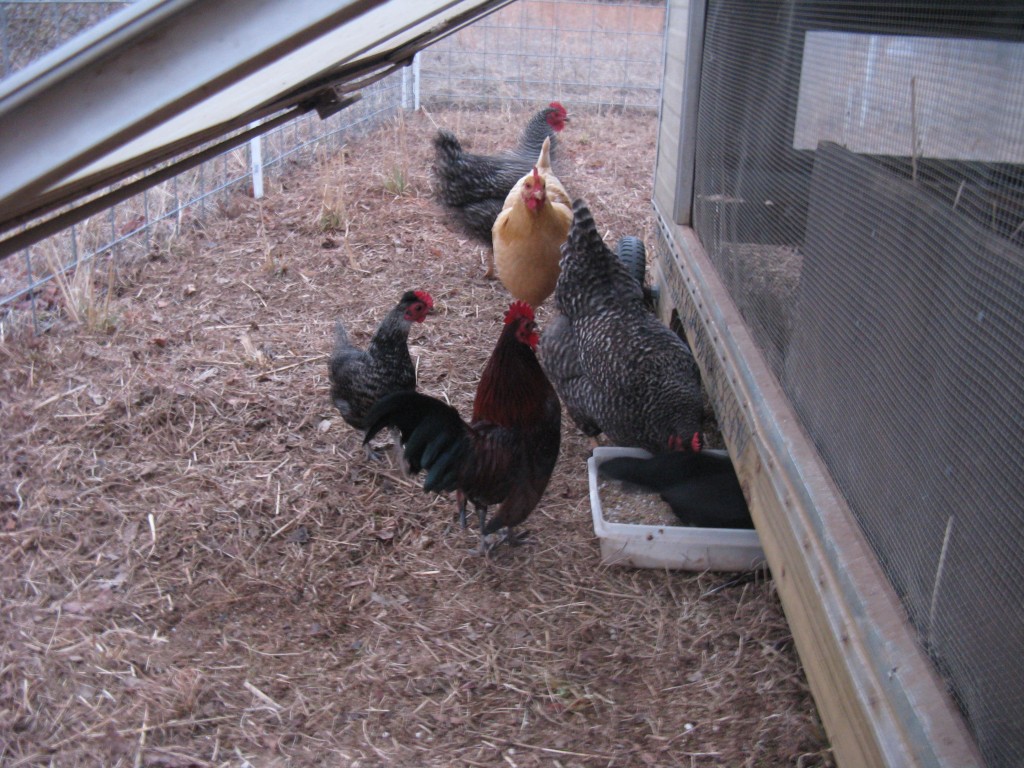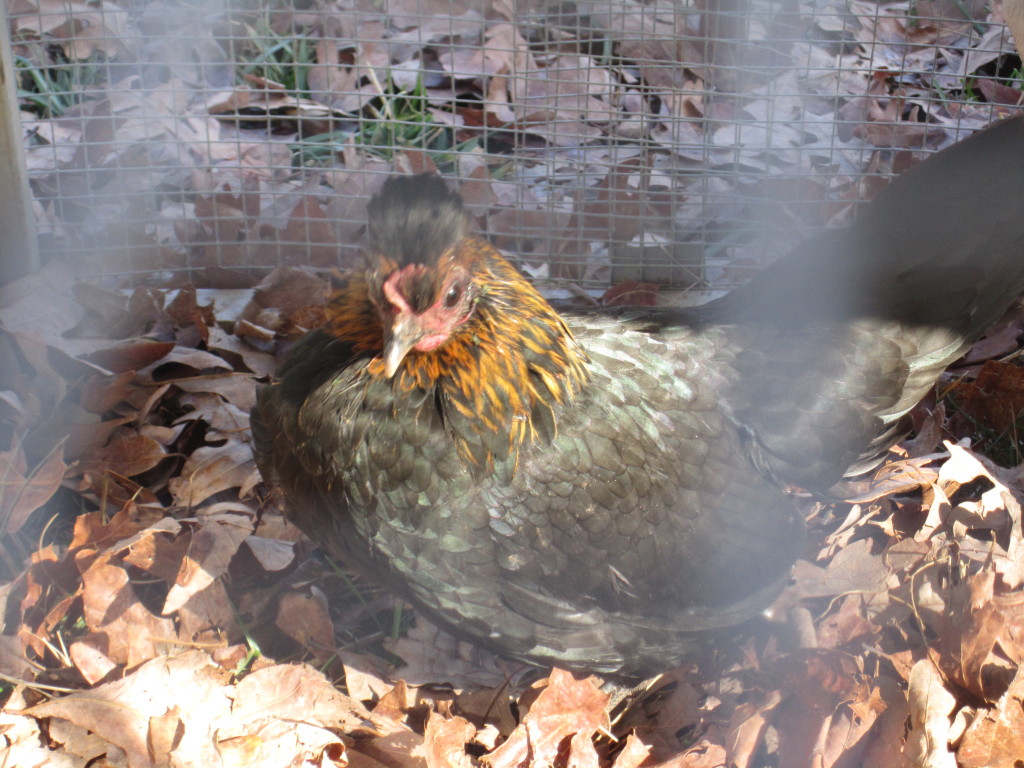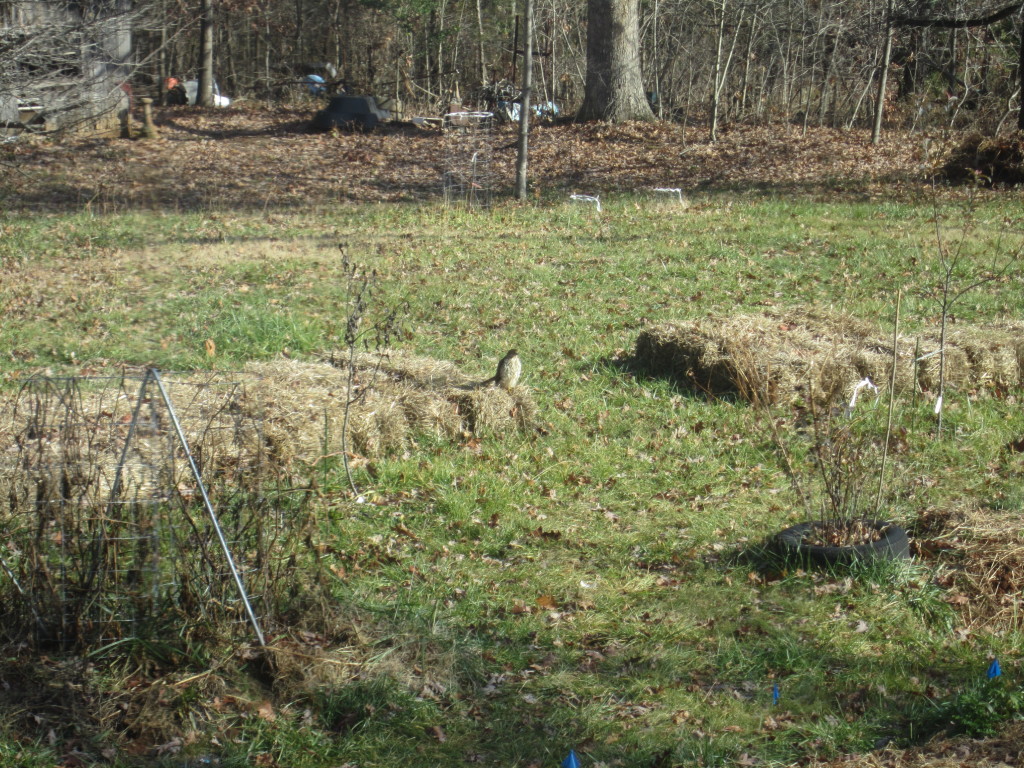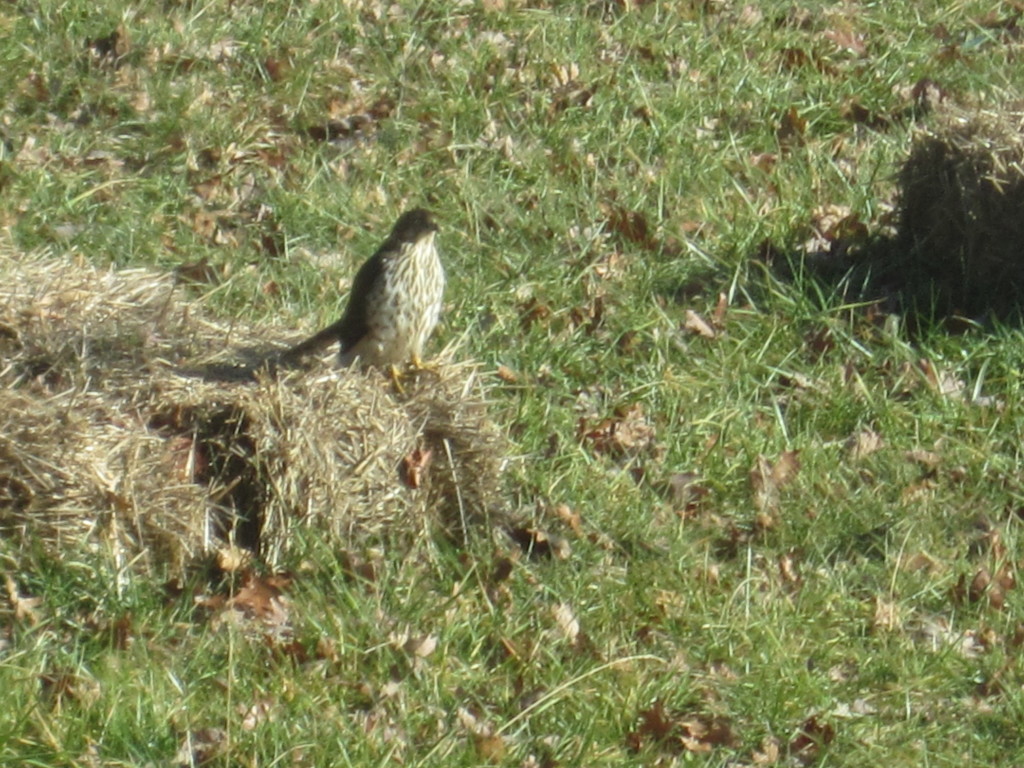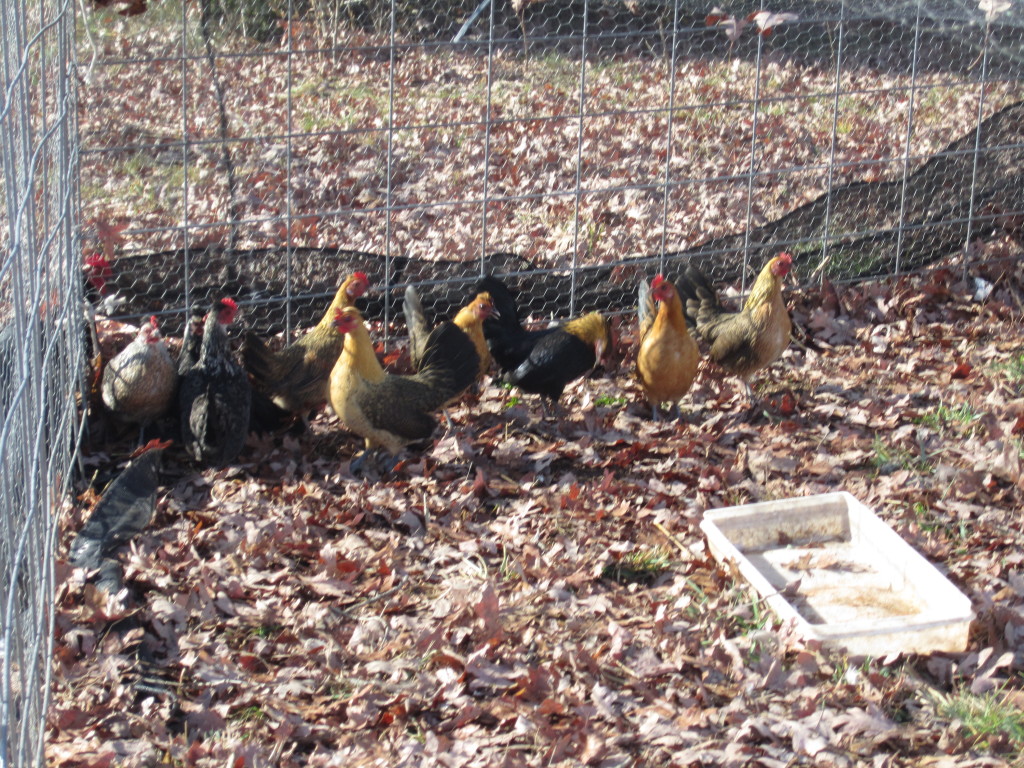i spent part of the afternoon outside, sitting on an indian blanket from the wedding, looking at our new bantam flock. they seem to be having a fine time inside of their new bantam mobile, and since their space is small and contained, i was able to get a really close look at all of them.
first of all, roosty is the leader of the new flock, and he has 4 of his old ladies with him: brin, who is brindle and just had a brief stay in the chicken spa because she was molting and looking ugly; q, who looks like a quail and is named after one; vanna, who has a white neck on a black body and is named after vanna white; and cleo, who is very broody and has a long black tuft on her head and a bright golden neck (so we named her after cleopatra).
i wanted to give the new hens names, but first i had to spend some time observing them and taking notes. at first they all looked alike to me, except for the hen now named perry, who has no comb or tuft of hair on her head and seriously looks like she is a sneaky hawk who has gone undercover with the chickens! some of the new hens have features that distinguish them from the rest of the flock–features that are very unique and noticeable in the crowd–but others have features that are similar to their mobilemates and thus needed to be observed more closely to tell them apart from one or two look-alikes. so i made this chart (i am an organizational nut at heart):
S Gray/S Black = speckled gray/speckled black
|
Neck color
|
Body color
|
Tuft on head?
|
Comb type
|
Other
|
Name
|
|
Gold
|
S Gray
|
Yes
|
Pink, big, crooked, floppy
|
|
Elvis
|
|
Gold
|
S Black
|
Yes
|
Pink, small, crooked, floppy
|
|
Presley
|
|
Gold
|
S Black
|
No
|
Pink, small
|
Orange wings
|
Red Wing
|
|
Gold
|
S Gray
|
No
|
Pink, small
|
Orange breast
|
Robin
|
|
Gold
|
S Black
|
Yes
|
Pink, small
|
Ring of missing feathers around her neck
|
Ringo
|
|
Gold
|
S Gray
|
Yes, very small
|
Pink, big
|
Orange spotted wings
|
Poka
|
|
Gold
|
Black
|
No
|
Pink, big
|
|
Oro
|
|
Gold
|
Black
|
No
|
Gray, small
|
|
Churo
|
|
Gold
|
Black
|
No
|
Gray, small
|
Small bodied
|
Teeny
|
|
Gold
|
S Black
|
No
|
None
|
Looks like a hawk
|
Perry
|
The traits that are highlighted in blue are the traits that played the largest factor in giving them their name. For example, the two with the very floppy combs were hard to tell apart until i looked more closely at comb size and the direction it flopped over their face. they both looked like they had elvis-like hair to me, so i named the one with the largest comb elvis and the one with the smaller comb, presley.
red wing, robin, poka, and ringo were easy to tell apart from the crowd, since they had deep orange wings, a deep orange breast, deep orange polka-dotted wings, and a ring of missing feathers around their necks, respectively. ringo‘s missing feathers were from getting her head stuck through chicken wire for an entire day before my dad noticed and could free her. hilariously, she still has the featherless ring!
oro and churo look very similar to the matronly cleo, so i decided to give them names with similar sounds. neither have black head tufts like cleo, but they both look like less regal versions of her anyway! teeny is the smallest-bodied of all, and has a really tiny gray comb, and perry, like i said, looks just like a hawk (named perry after the peregrine falcon).
and there you have it… our new chickens’ names. proof that even within a batch of seemingly similar things, you can tell those things apart if you sit and look long enough!
.:.
